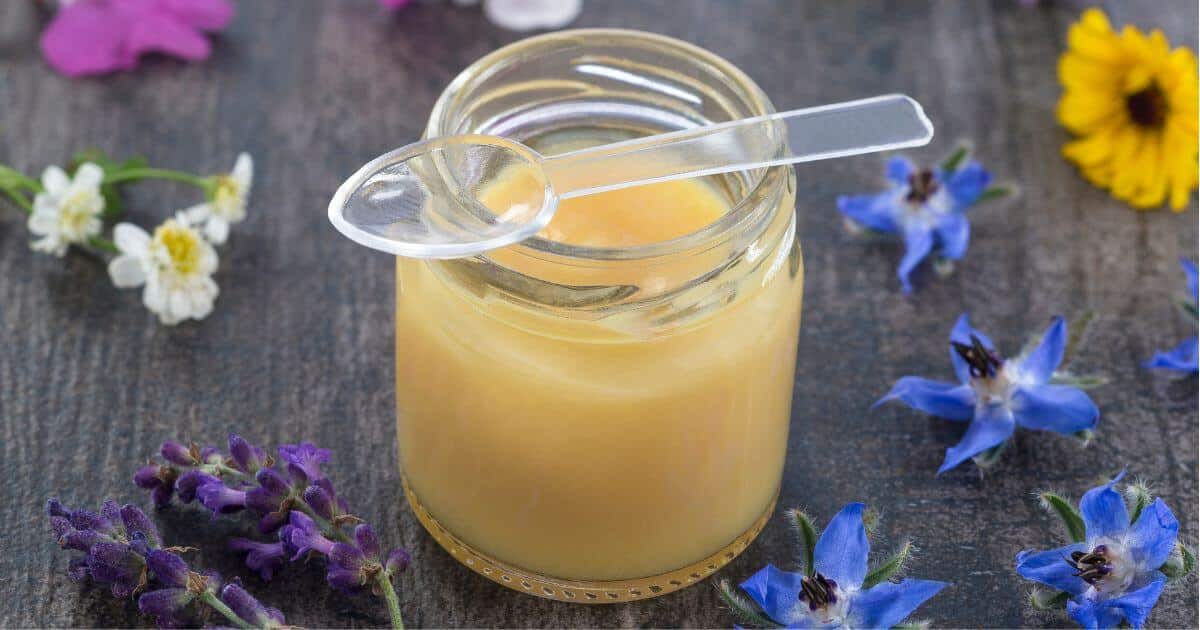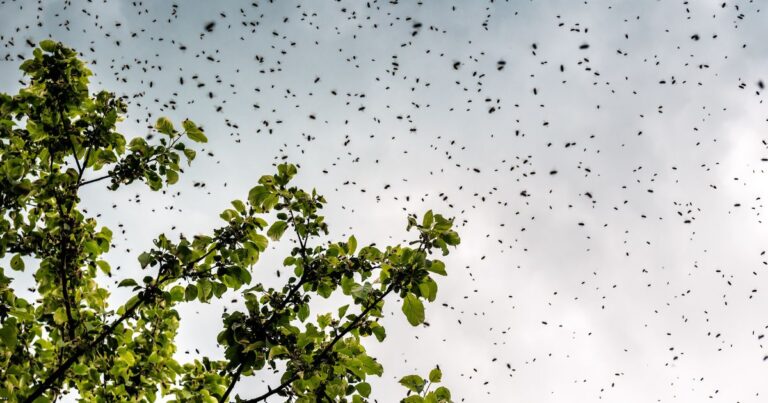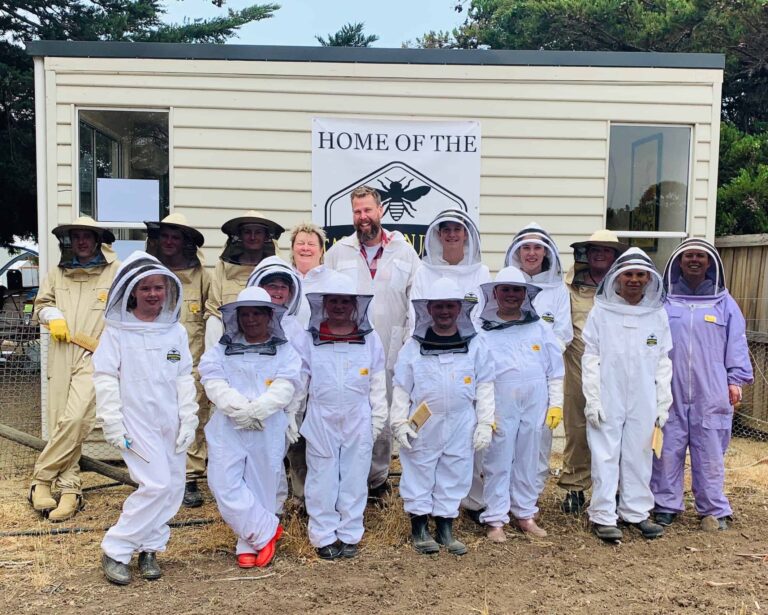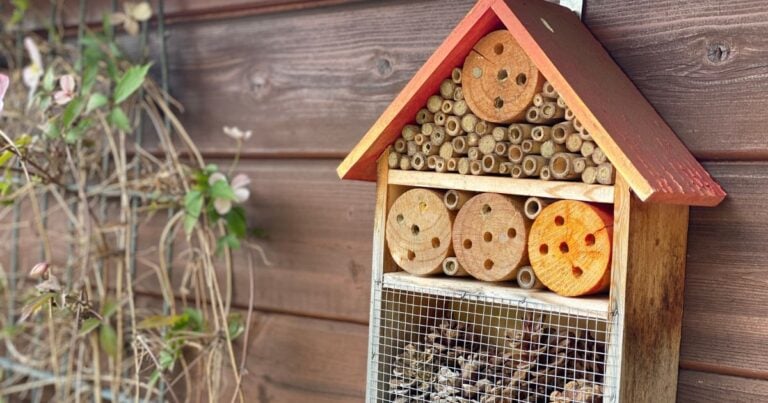Royal Jelly – What Is It?
Royal jelly is a milky secretion that comes from a gland in the heads of young worker bees and is fed directly to all bee larvae.

In addition to honey, bees also produce beeswax, propolis (or bee glue) and royal jelly. Royal jelly is a milky secretion from the hypopharyngeal gland (or brood food gland) located in the heads of young worker bees.
It’s fed directly to all bee larvae, regardless of whether they are to become drones, workers or queens, however, after the first three days of development, only the queen larvae continue to receive royal jelly. The queen larvae are housed in special cells called queen cups, which are stocked with an abundance of royal jelly.
The extended diet of large quantities of royal jelly triggers a cascade of epigenetic changes that result in the production of queens. The differences between honey bee queens and workers constitute one of the most striking examples of environmentally-controlled phenotypic polymorphism.
In other words, although queens and workers are essentially clones at the DNA level, they are strongly differentiated in a range of characteristics.
Queens develop reproductive ovaries, whereas workers are sterile but develop pollen baskets, larger mandibles, brood food glands and wax glands.
Queen larvae take an average of 15.5 days to mature, whereas worker larvae require about 21 days. There is also a vast difference in longevity, with queens living for several years, compared to a few months for workers.
Lastly, the behaviour of the two castes is also quite different, with the queens being concerned solely with reproduction and laying up to several thousand eggs per day, leaving the workers to take care of the maintenance of the hive.
It’s the amazing fertility and longevity of the queen honey bee that doubtless led to speculation that the consumption of royal jelly may confer beneficial effects to humans.
Royal jelly is a pasty substance with a pungent odour and a sour taste. It is typically composed of roughly two-thirds water, together with proteins, sugars, lipids, trace elements and vitamins. In spite of numerous studies, it is still not known exactly how royal jelly works, or what is entirely responsible for its incredible effects. The protein called royalactin has, however, been implicated in phenotypical change.
Used in traditional Chinese medicine as a tonic for general health, in the 1950s, royal jelly was claimed to have rejuvenating effects on humans. Described as ‘miraculous’ and as a natural superfood, users claim that royal jelly acts as a tonic and stimulant, creating a euphoric effect and adding energy and vitality.
Royal jelly is also said to provide relief from a wide variety of chronic or recurring disorders, such as high blood pressure, infertility, high cholesterol, liver problems, some forms of cancer, pancreatitis, insomnia, stomach ulcers, kidney disease, menopausal symptoms, skin disorders, bone fractures, asthma and hay fever, and premenstrual syndrome (PMS).
It may also help prevent premature ageing, assist with weight loss, increase circulation, and aid hair growth on the scalp, as well as boosting the immune system. Caution should be exercised, as royal jelly has been known to cause severe allergic reactions, particularly amongst those suffering from existing allergy problems.
In Australia, royal jelly is available in a variety of preparations, including capsules and creams, and can be frozen, freeze-dried or fresh. Royal jelly is widely used in cosmetics. As an oral preparation, it is often mixed with honey to make it more palatable; the dose rate is usually between 200-500mg per day.
Although there is plenty of circumstantial evidence that royal jelly may be beneficial to mankind, this is largely unconfirmed by scientific studies. Some antibiotic and antiviral capability has been demonstrated in animals, along with increased fertility, higher growth rates and decreased mortality.
Royal jelly has also been proven to reduce blood cholesterol and inhibit some tumours in laboratory animals, but it is very difficult to evaluate the studies conducted with humans.
In order to produce and harvest royal jelly, it is necessary to stimulate colonies of honey bees to produce numbers of queens. This is a labour-intensive activity that makes commercial production somewhat impractical in western countries like Australia, although several companies advertise locally-harvested products.
Movable comb hives with artificial queen cups are required, together with considerable expertise. The royal jelly is harvested when queen larvae are about four days old.
During a 5-6 month season, a well-managed hive could be expected to produce about 500g of royal jelly. Since it is perishable, producers must have immediate access to cold storage or a freeze drier. Sometimes, royal jelly is sold sealed in its original queen cells, after the removal of larvae.
..
Want some royal jelly? Ben’s Bees sells fresh royal jelly, royal jelly capsules as well as raw honey containing royal jelly.




